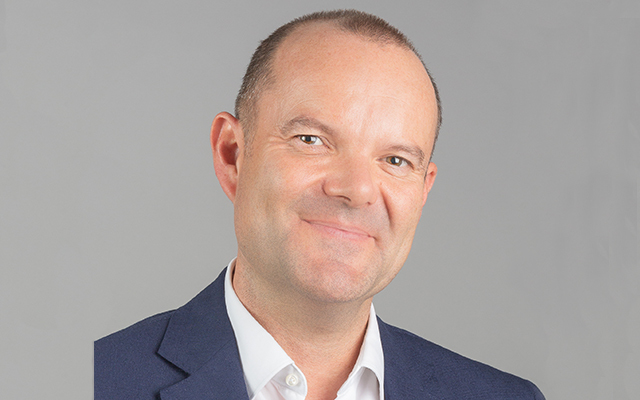
Emmanuel Cloërec is associate director in charge of retail at Eol, an independent company specialising in corporate real estate consulting. Created twenty years ago,Eol 's teams are recognised for their expertise in logistics, industry and distribution. Its portfolio of assets represents 10 million m² and over 2,000 buildings. Since its creation, the company has completed nearly 4 million m² of real estate transactions. In the textile sector, Eol has worked with brands such as Etam, Celio and Orchestra.
Journal du Textile: What has been the impact of covid-19 on trade?
Emmanuel Cloërec: The health crisis has been an accelerator of digitalization. Above all, it validated certain models. Highly digitalised companies, such as Monoprix, have easily succeeded in transferring from offline to online, with practices like click and collect and home delivery. Conversely, covid-19 has been a cut-off point for retailers that were not sufficiently digitalized. However, all current failures must be seen in the long term. Retailers such as La Halle and Camaïeu had been experiencing difficulties for several years and Covid only amplified them. We realise that the evolution of digital technology is so rapid that some retailers no longer have the means to keep up. As an example, a group like Inditex was able to mobilise an investment of more than €1.6 billion in 2018 for its digital transition.
What new habits have consumers adopted?
-The customer experience remains a determining factor. During the lockdown, consumers had time to shop online. They could see that some sites had good ergonomics while others were not very intuitive or even badly designed. They also quickly became accustomed to new practices such as the drive. Some retailers have taken advantage of this, such as Carrefour, which opened over 300 drives in France last year. However, we should not believe that online sales have been a miracle cure. For some brands, it has only allowed them to limit the damage. For example, at Etam, online sales managed to save a little more than 10% of turnover over the period. The health crisis has also highlighted another problem, which has affected all retailers, including pure players: to run a warehouse, you need manpower and you also need manpower to deliver to customers. So the lockdown has blocked the whole supply chain.
Have you observed any particular phenomena in the market?
-Since the end of the confinement, there has been an increase in concentration. We have just seen the takeover of La Halle by the Beaumanoir group , and Conforama has been taken over by the owners of But. The market is also paying close attention to the situation of the Camaïeu and Celio groups.
There was a lot of talk during the confinement of proximity, of a more responsible trade, the desire to turn to second-hand products. Do you think these movements will continue?
-It's true that convenience stores were the big winners of covid-19. The "city" formats have been very active, particularly Franprix and Monoprix. On the other hand, hypermarkets suffered. However, nature quickly took over and since the end of the confinement, hypermarkets have been very dynamic. Why is that? Because you can drive to them and thus avoid as many contacts as possible. This is reassuring because the uncertainties remain high and the climate is still very anxiety-provoking.
The big surprise is the enthusiasm of consumers for out-of-town shopping. Household equipment, DIY, toys, bicycles, children's clothing, etc. The deconfinement has caused a general increase in "useful purchases". Sales of mattresses, for example, rose by 60%! Shoppers also sought to treat themselves at low prices in stores such as Gifi or Action. In fact, we realise that the proximity model worked because people could not travel, but since the end of the confinement, the major balances have returned. However, there is a basic movement: that of deconsumption. Some people want to consume less but better. The return to normalcy is likely to be very long, especially as we will have to live with the virus for a long time to come. But it is not pleasant to go shopping with a mask on. It's especially problematic for ready-to-wear clothing. There is another difficulty in certain cities, particularly Paris: the absence of tourists. And yet, they are the ones who keep certain sectors going. Luxury goods are in difficulty. Parisian retailers are also suffering a lot, because they have lost a large part of their clientele.
How do you see post-covid trade evolving? Will there also be an "after world" for commerce?
-We used to look at what was happening in the United States, but now it's also interesting to look at China, which is the showcase of the "new retail". With covid-19, there has been a breakthrough of digital there, while online payment habits were already very developed. We are seeing new practices, such as live-streaming, with salespeople in shops or food markets presenting products online. The shop will become a high-tech product. This is the example ofHema Fresh, which belongs to the Alibaba group. This new food shop concept aims to merge the advantages of online and offline. The shop offers salad walls or bins in which consumers can catch their own fish or seafood. The product can be prepared and eaten on the spot, delivered to the customer's home by express delivery or ordered online. The same trends can be seen at Amazon with its "physical" Whole Foods chain. Some shops will soon be equipped with the smart shopping carts developed by the group. Customers can thus take their items with them without going to the checkout and payment is made automatically at the checkout without contact. All irritants (queuing, payment) have been eliminated. What's more, these shops offer organic and local produce!
Interview by Yann Suty
Source: Journal du Textile
Date: 25/08/20
Link https://www.journaldutextile.com/depuis-la-sortie-du-confinement-les-grands-equilibres-sont-revenus?utm_source=sendinblue&utm_campaign=NL_JDT_25_aout&utm_medium=email